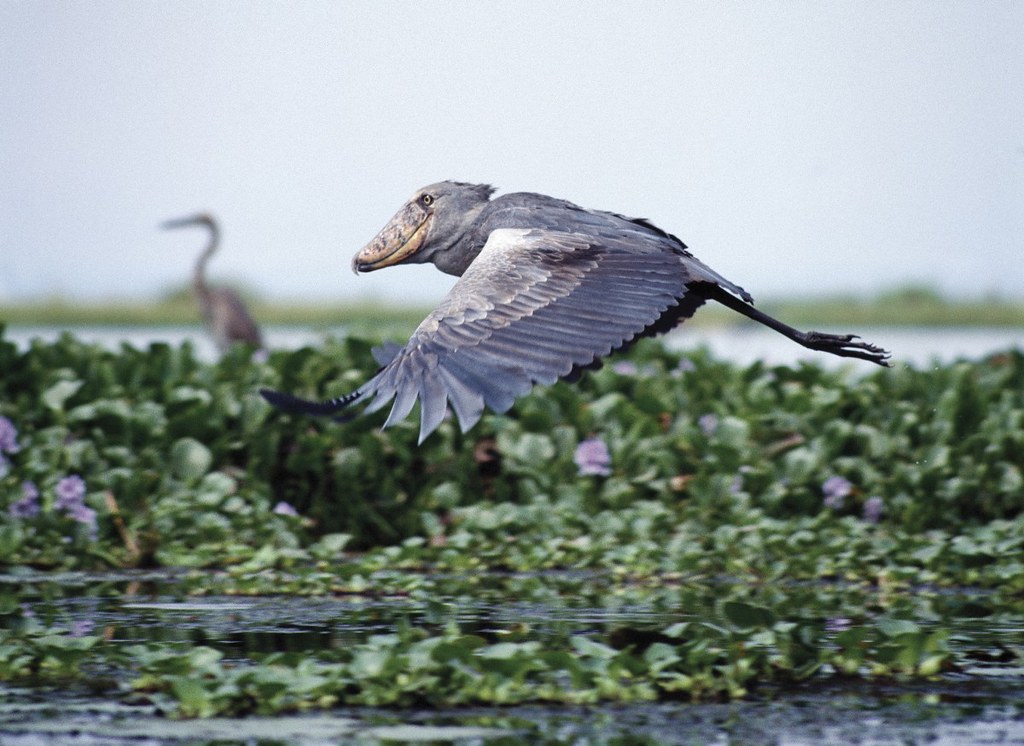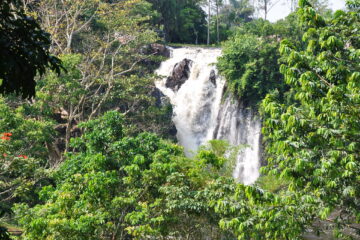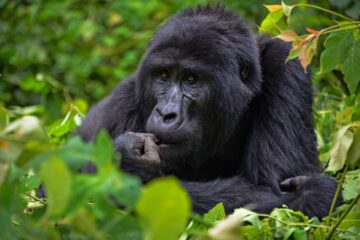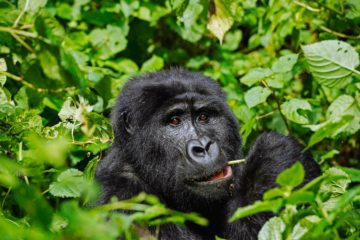Tucked away on the shores of Lake Victoria in Uganda lies Mabamba Swamp birdwatching, an enchanting expanse of wetlands that beckons nature lovers and eco-tourists from around the globe. Renowned for its incredible biodiversity and unparalleled birdwatching opportunities, Mabamba Swamp is not just a destination—it’s an experience. In this article, we’ll take you on a journey through the swamp’s ecological significance, its status as a birdwatching paradise, and why it should be at the top of your travel list.
Ecological Marvel: The Significance of Mabamba Swamp
Mabamba Swamp, spanning approximately 2,500 hectares, is a jewel in the Lake Victoria basin. This vital wetland is a complex mosaic of reed beds, papyrus swamps, and open water channels, each playing a crucial role in sustaining its diverse ecosystem.
A Haven of Biodiversity
This vibrant swamp is home to over 200 bird species, including the majestic Shoebill Stork (Balaeniceps rex), an iconic and critically endangered bird. Known for its prehistoric appearance and large, shoe-shaped bill, the Shoebill is a major draw for bird enthusiasts. Aside from this enigmatic bird, the swamp also shelters a variety of species such as the Malachite Kingfisher, Great White Egret, and African Jacana.
Essential Plant Life
The plant life in Mabamba Swamp is just as remarkable. Papyrus reeds and water lilies are integral to the swamp’s health, providing essential habitat and food for wildlife. These plants also contribute to water filtration and erosion control, highlighting the swamp’s role in maintaining ecological balance.
A Birdwatcher’s Paradise
For those passionate about birdwatching, Mabamba Swamp is nothing short of paradise. Its unique landscape offers an unparalleled opportunity to observe a diverse array of bird species in their natural habitat.
The Shoebill Stork: A Star Attraction
The Shoebill Stork is undoubtedly the highlight of Mabamba Swamp Birdwatching. Standing over 4 feet tall with a strikingly large, bill-shaped like a shoe, this bird offers a glimpse into a bygone era. Birdwatchers frequently spot these formidable birds hunting in the swamp’s shallow waters. For the best chances to see the Shoebill, plan your visit during the early morning or late afternoon when they are most active.
Guided Birdwatching Tours
To fully experience Mabamba Swamp, consider joining a guided birdwatching tour. EBS Tours and Safaris always provide eco-friendly tours using traditional dugout canoes to navigate the intricate waterways of the swamp. Our experienced guides offer insights into the swamp’s avian residents and assist in spotting rare and elusive species. These tours are designed to minimize impact on the environment while maximizing your wildlife viewing experience.
Eco-Tourism and Conservation Efforts
Mabamba Swamp stands at the crossroads of eco-tourism and conservation, playing a crucial role in both. Protecting this unique ecosystem is essential for preserving its rich biodiversity and ensuring sustainable tourism.
Community Engagement
Local communities are vital to the conservation of Mabamba Swamp. Various community-based organizations are dedicated to promoting sustainable tourism and environmental education. These initiatives not only raise awareness about the swamp’s ecological value but also foster local involvement in wildlife protection, including the conservation of the endangered Shoebill Stork.
Addressing Conservation Challenges
Despite these positive efforts, Mabamba Swamp Birdwatching faces significant conservation challenges. Habitat degradation, pollution, and invasive species threaten the delicate balance of this ecosystem. Ongoing conservation projects aim to address these issues through habitat restoration, pollution control, and management of invasive species. Collaboration between local communities, government bodies, and conservation groups is crucial for safeguarding the swamp’s future.
Planning Your Visit to Mabamba Swamp
A trip to Mabamba Swamp offers an immersive experience in Uganda’s natural beauty. Here’s everything you need to know to make the most of your visit:
Getting There
Located about 50 kilometers west of Kampala, Mabamba Swamp is accessible by road. The journey takes approximately 1.5 to 2 hours. Visitors can opt for a private vehicle or join a guided tour from Kampala, which typically includes transportation, a guide, and a boat ride through the swamp.
Essential Gear
For a successful visit, bring binoculars and a good camera with a zoom lens to capture the stunning wildlife. Dress in comfortable, weather-appropriate clothing and include a wide-brimmed hat, sunscreen, and insect repellent in your packing list. Waterproof shoes or boots are advisable due to the swamp’s muddy conditions.
Optimal Visiting Times
The best time to visit Mabamba Swamp Birdwatching is during the dry season, from June to September and December to February. These months offer more favorable weather conditions and increased wildlife activity. However, birdwatching opportunities are available throughout the year, with different species becoming more active at various times.
Embracing Responsible Tourism
When visiting Mabamba Swamp, practicing responsible tourism is essential to protect this precious environment. Follow guidelines from local guides and conservation organizations, respect wildlife, and support eco-friendly practices. Your conscientious approach helps ensure that Mabamba Swamp remains a thriving sanctuary for future generations.
Mabamba Swamp Birdwatching is a testament to the extraordinary beauty and ecological complexity of East Africa’s wetlands. With its rich biodiversity and premier birdwatching opportunities, it offers an unforgettable experience for nature enthusiasts and eco-tourists alike. By exploring Mabamba Swamp, you not only gain a deeper appreciation for the natural world but also contribute to the conservation of this vital and enchanting ecosystem. Whether you’re a seasoned birdwatcher or an adventurous traveler, Mabamba Swamp promises an enriching journey into one of Uganda’s most remarkable natural treasures.






Tour Reviews
There are no reviews yet.
Leave a Review